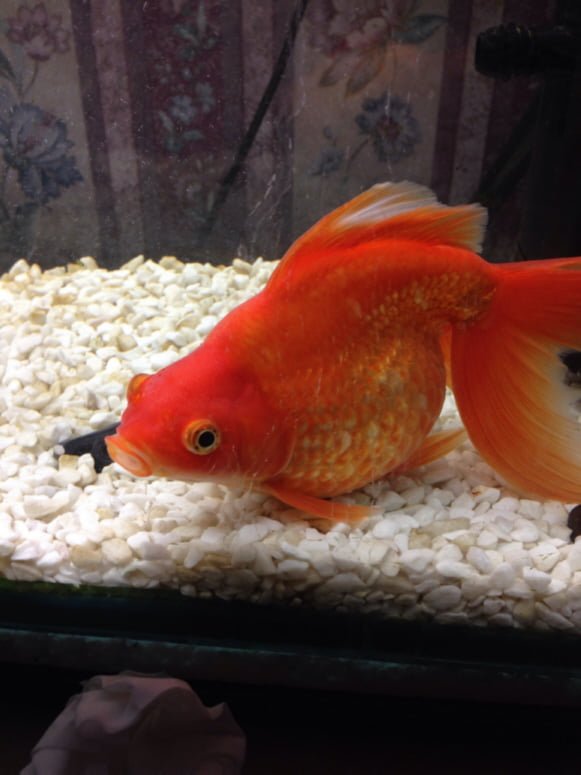-
Goldfish pressed bottom, and not eating
Goldfish pressed bottom, and not eating it may be suffering from nitrate poisoning. Nitrates, the third and final toxin to convert in the cycle is easily tolerated in low amounts of 10 to 20 ppm. Nitrates rob the blood of oxygen, much like nitrites. Unlike nitrites, the toxin must be reduced gradually to avoid the risk of nitrate shock. Reducing the toxin gradually also keeps the water table high. Goldfish that have been poisoned by nitrates prefer the pressure of deep water. Deep water counteracts the effects of the pressure caused by nitrates
Goldfish bottom aquarium
Nitrates rob the blood of oxygen. A healthy pH level could mean the difference between life or death in the case of nitrate poisoning. If your fish has suffered from nitrate poisoning test KH and pH. Carbonate mineral and oxygen combined make up the parameter pH. Carbonate mineral gives water the ability to support oxygen
Raise KH (carbonate mineral) to 140 ppm
Include a pond pump in your set up. They come in all sizes. Only a real pond pump provides the necessary action to eliminate carbon dioxide from water. Co2 is created from waste. Co2 takes up space that keeps oxygen from entering the body of water
Goldfish bottom pond
If your nitrates are higher than normal you may be feeding too much. Test nitrate levels in tap water if high nitrates persist. If you are on a well test freshwater source
Algae forms when nitrates are present. Nitrates are the plant’s food source. Removing too much algae at one time may cause nitrate levels to spike. It is advised to leave algae growing on the back and the side walls to help with nitrate reduction
Supersaturated gases (found in tap water) can cause the same symptoms, although more rare than nitrate poisoning. Learn about SSG to make sure your fish are not at risk

TEST nitrates
Goldfish curling sideways
Refer to:
All rights
Author: Brenda Rand